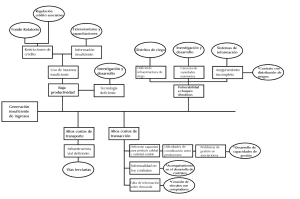Guest blog written by Alejandro Rueda, and Sonia M
This is a team from Colombia. They successfully completed the 15-week Practice of PDIA online course that ended in December 2018. This is their story.
Throughout 15 weeks, our team was able to identify the causes behind our problem, to elaborate on them, to design strategies, to iterate, and, not less important, to discuss, debate, and engage as a group during the whole process. Although the primary objective of our team is to generate recommendations for public policy to overcome the problem of inefficient market access for family farmers, we were able to constantly work to make our strategies implementable for any public officer. We also had the good fortune of having one of our team members working for the Ministry of Agriculture directly involved in generating public policy for family farming. The course was very important to articulate a better, more centered, and methodologically stronger proposal as well as to guide a course of action taking into account the above.
The course left us various key takeaways.
- The first one has to do with the importance of working as a team. This includes the whole process of defining who will be in the group, why, and what are the clear roles and tasks each one had to perform. It also includes the need to be periodically communicating and discussing, to be listening to the other points of view, and articulating it to the whole PDIA process. During the past months, we engaged in very serious as well as enriching discussions that shape the strategies that today we are articulating.
- A second takeaway, which we consider is the key to action, is the process of identification of the main problem and its sub causes in a logic that denies pre-set solutions. This helped us to better understand what we were doing and how we should be doing it. The fishbone was a key element in our group since one of our authorizers is now using it (with some modifications) to strengthen our proposal.
- A third takeaway of the course is the constant reminder to direct your efforts towards action. This is essential not only for the outcome, but for the whole process. If you start focusing on the more realistic and basic tasks your team can manage to do in a week, your are definitively approaching to the problem solved scenario. The latest not meaning that is a direct highway to the solution but, as you encounter difficulties in the way, manage to solve them and move along with what you’ve learned, you are a step closer to solving it.
- A fourth takeaway is to engage fully to the process. A team that is active, that discusses and acts accordingly, that is constantly evaluating the process, reporting on the progress, bringing ideas of action and strategies for improvement, is a team that in engaged. Also, the engagement of team members will result in a more efficient engagement of third parties.
Without the course, our proposal will have been very different. We now have a methodologically stronger paper as well as a clearer path of action. As mentioned above, the fishbone is a key element in our document, since it became the basis to understand the problem in a more dynamic and visual way, and from where the positive and negative factors and the lessons learnt derive.

It will be annexed to the final document as well. Also, we now know exactly who to approach, how to start generating engagement, and were to start constructing ability. The whole PDIA process helped us structure our way of working as well as everything concerning the elaboration of the proposal.
Finally, our team has focus in the past weeks in the elaboration of the final document. We are structuring recommendations for public policy and for civil society actors that want to implement projects that help solve family farming inefficient market access. In this process, we have had periodic meetings were we report on the progress, we make adjustments to introduce and we try again. We even start using PDIA language. While the proposal is being finished, our team member linked to the Ministry has already started to create space for authorization, acceptance and ability in one of the key institutions that needs to be engaged. Although our scope of action is limited, we are certain that what every team member learned would be applied in the next tasks and projects they are engaged in.
To learn more, visit our website or download the PDIAtoolkit (available in English and Spanish).